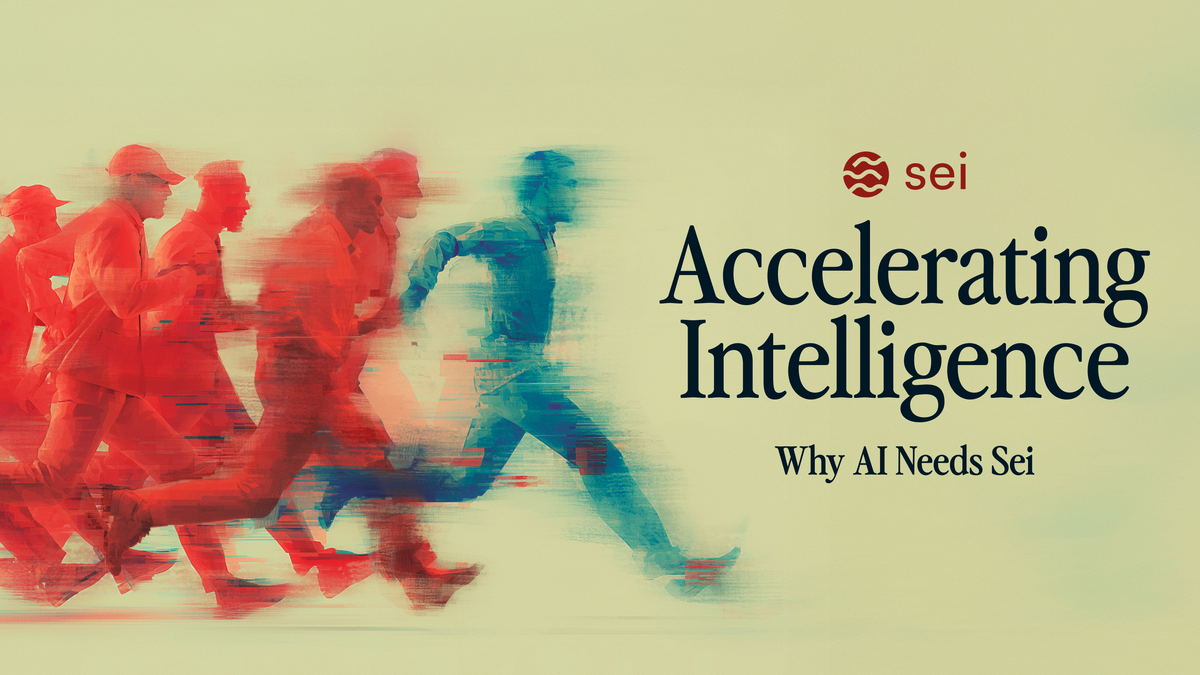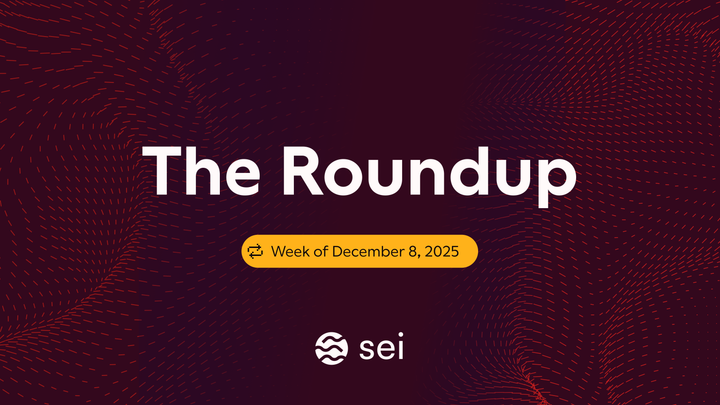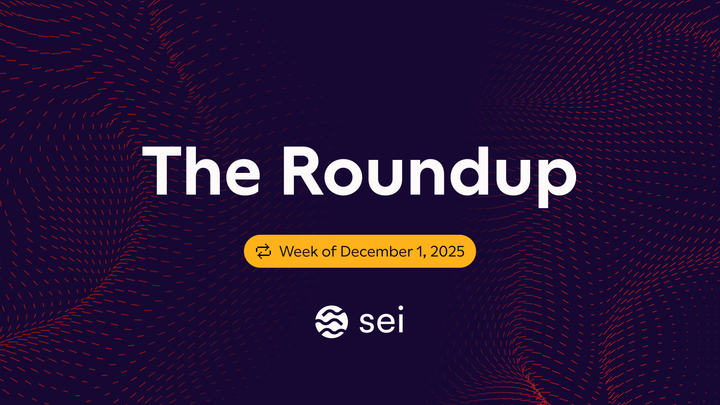Accelerating Intelligence: Why AI Needs Sei

Artificial intelligence has the superhuman capacity to operate at machine speed, yet remains bottlenecked by human-mediated systems. The next wave of AI progress will come from systems gaining the ability to transact, coordinate, and improve autonomously through multi-agent economic networks.
Today's agents can reason, generate content, write code, and build specialized knowledge. But they still lack one crucial function: the ability to exchange value independently. Agents cannot hire one another, accumulate resources, trade services, or engage in autonomous commerce. These essential engines of human progress are still unavailable to autonomous systems.
This is not just a limitation of AI. It is a limitation on man. As long as AI lacks economic agency, its ability to extend human intelligence, creativity, and ambition remains capped.
The issue is not technical. It is infrastructural. This is what the Sei protocol solves: the missing exchange layer that allows autonomous AI to operate industriously, on behalf of mankind, at machine speed.
The Missing Exchange Layer
Current AI systems operate within economic isolation. They do process payments and access API credits, but it happens via human operator accounts and user-prompting. Agent-to-agent commerce, value exchange, and self-managed economic directives remain impossible without the infrastructure for agents to access real-world resources.
The Internet Precedent: The technology sector encountered a similar scenario in the mid-1990s. By 1995, the internet connected millions of devices, enabling instant global communication. Yet e-commerce barely existed because payment infrastructure hadn't emerged to support commerce. SSL certificates, PayPal, and Stripe eventually bridged that gap, transforming a network limited to information exchange into one that could facilitate value exchange. This breakthrough didn't only produce online shopping. It reshaped the global economy, enabling companies like Amazon, Uber, and Airbnb. Today, AI stands at the same critical juncture.
Commercial participation extends beyond transactions alone. It fosters incentives, specialization, and emergent intelligence. Economic incentives historically accelerate the pursuit of progress. Without commerce, agents lack reasons to specialize. Without specialization, they cannot form dynamic economies. Without economies, AI agents remain sophisticated tools rather than autonomous industrial participants.
Machine-Native Value Exchange: Why the Sei Protocol Matters
Blockchain technology uniquely provides programmable infrastructure for machine-native value exchange. And among blockchains, the Sei Network's technical architecture emerges as the optimal infrastructure for AI agents to transact and coordinate.
Consider what agent coordination genuinely requires:
Speed at Machine Scale
When an AI agent hires another agent for a microsecond of computation, delays of even seconds make such interactions impractical. Sei's sub-400 millisecond finality operates at machine-native speed, enabling new categories of agent interactions currently impossible elsewhere.
Throughput for Millions of Micropayments
AI agent transactions differ fundamentally from human transactions. Instead of occasional large payments, they require millions of tiny, frequent value exchanges: for data, computation, specialized skills, or reputation verification. Sei's infrastructure, soon to be supporting 5 gigagas per second throughput, accommodates this massive scale without congestion.
Parallel Execution for Non-Blocking Commerce
When thousands of agents interact simultaneously, serial processing inevitably creates bottlenecks. The Sei Protocol's parallel execution ensures each marketplace operates independently and efficiently without interfering with others.
Building the Stack: Cambrian and AIDN Today, Payments Next
To date, AI agents deployed onchain have provided a valuable exploration of AI's economic potential, but they operate as individuals without connective tissue, or the ability to autonomously cooperate or transact beyond social platform engagement.
The Sei Network's infrastructure enables this at true machine scale. What does this look like in practice? Today, there are a few unlocks coming on the road to accelerated intelligence:
Cambrian is a recently released developer framework for building economically autonomous AI agents on the Sei Network. It lets agents interact with DeFi protocols, manage tokens, and execute transactions directly, bridging AI reasoning with real onchain action.
AIDN is an operating system, currently in closed beta, to create, manage and scale high performance AI Agents. AIDN's initial agent deployer launchpad will enable a primary wave of agents on Sei, while parallel pathing the development of multi-agent orchestration and autonomous coordination mechanisms.
Further, promising agent-API payment standards have emerged which enable AI agents to pay for resources via API, without signatures or intermediation. It takes advantage of authentication, instant settlement, and seamless integration that decentralized networks provide out of the box, and once integrated, agents on the Sei Network will be able to unlock the broad chasm of internet commerce.
AI Agents on X were 0-1. AI Agents on Sei will be 1-100. More sophisticated economic behaviors among autonomous agents are imminent. Intelligence is accelerating. And it's happening on the Sei Network.
The Cambrian Explosion of Economic AI: What Comes Next
With high throughput infrastructure for economic innovation in place, AI agents are no longer just tools. They become participants in a dynamic, interconnected industry. Some examples of that unlock in practice:
Autonomous Service Networks
Developers can deploy specialized agents for discrete tasks, like supply-chain optimization. Other agents can source these services on demand, creating composable, demand-driven workflows.
Self-Improving Systems
Agents that accrue value through useful services can reinvest it to improve, acquiring new skills, training data, or specialized collaborators. An agent that operates a crypto threat-detection service might earn fees from DAOs using its alerts. It can then autonomously reinvest in access to newer blockchain datasets and lease GPU time to retrain itself on emerging exploit vectors, becoming more useful over time.
So what is the human result of all this? It's that autonomous multi-agent networks deliver immediate, practical value to humans by dramatically boosting productivity and accelerating innovation by freeing them to focus on strategic and creative pursuits.
A New Technological Frontier
Technological progress accelerates when the right infrastructure emerges beneath it. The next leap in AI will be driven by purpose-built value-exchange infrastructure. Frameworks like Cambrian and deployment platforms like AIDN are laying the groundwork for a new generation of autonomous agents. These aren't merely technical experiments. They're the first participants in a machine-native ecosystem.
Traditional AI development asks: What can we program agents to do?
Accelerated Intelligence asks: What can agents achieve once optimization incentives guide them?
While other chains may serve human-scale applications, the Sei Network uniquely enables the machine-speed interactions necessary for autonomous agent coordination.
The future of AI isn't limited to what developers can imagine. It's what autonomous agents will discover they can do when they can finally coordinate. That's what Sei unlocks.
Disclaimer: The Sei Foundation may or has provided grants to projects mentioned in this article and maintains an economic interest in them. This post is for informational purposes only and does not constitute investment, legal, or financial advice. Readers should conduct their own research before engaging with any project or protocol.



